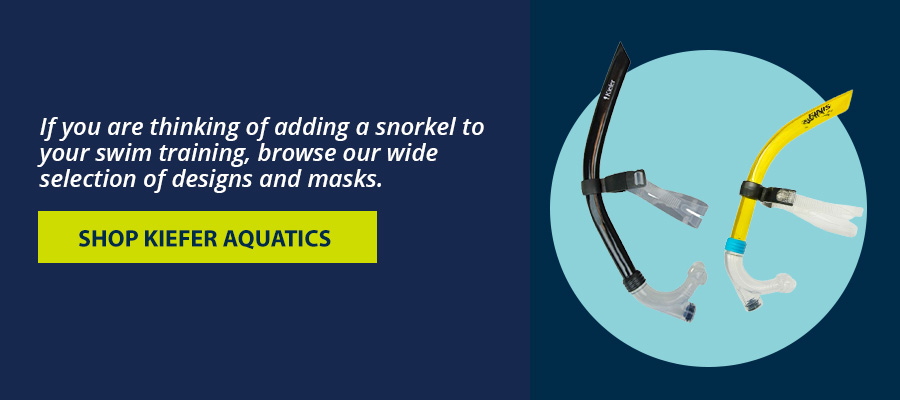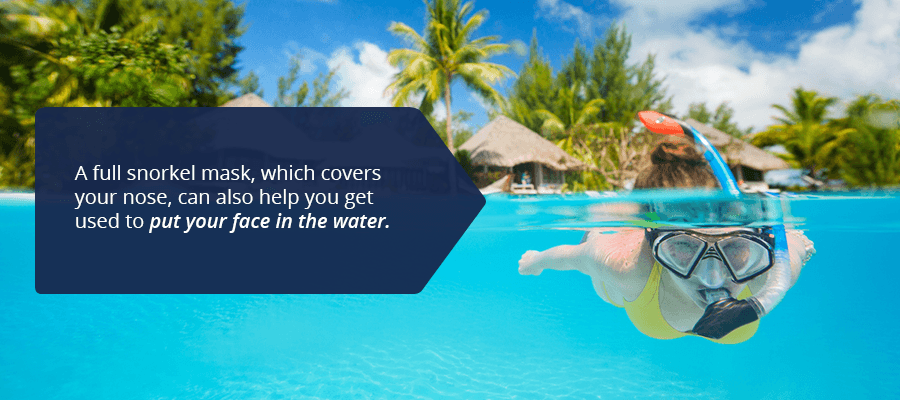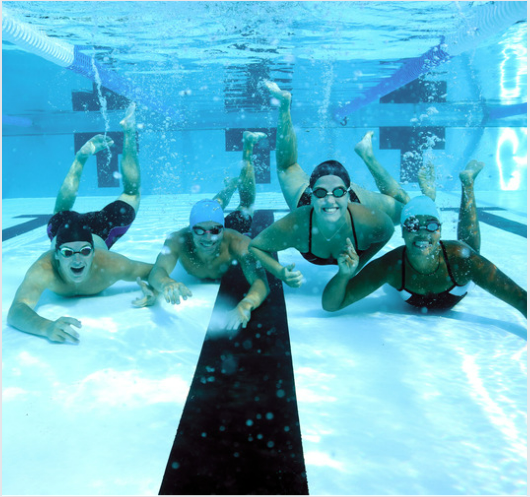Benefits of Training with a Swim Snorkel

Swim Gear
|
October 24, 2022

Benefits of Training with a Swim Snorkel
Swim training can take many different forms. At the most basic level, all you need is your swimsuit and a pool. But, swimmers have plenty of different tools that can up their training regimens. Swim snorkels can help you hone your technique as you prepare for a big race day or work on improving your times.What Are Swim Snorkels?
A swimming snorkel is not just for exploring coral reefs. While you might be more used to seeing vacationers with snorkels and flippers, you can use a snorkel for swimming laps in the pool. Training snorkels for swimmers look just like what you would expect. They have a mouthpiece and a slender tube that curves upward. The tube is designed to break the surface of the water, allowing you to breathe without taking your face out of the water. The snorkel will also have a strap that wraps around the back of your head to keep it secure as you move through the water. When used for pleasure snorkeling, many people wear a snorkel mask that covers the eyes and nose in full. You can certainly wear a mask while you are training in the pool, but you can also use your regular swim goggles.How to Breathe with a Swim Snorkel
A swimming snorkel is designed for ease of use, but it can take a little bit of practice to become accustomed to using one. When you first start, you get comfortable wearing the snorkel. Try a few basic laps of freestyle. Place your face in the water and keep the open top of the snorkel's breathing tube above the surface of the water. As you swim, you can breathe normally. Once you feel comfortable, you can start practicing breathing when the snorkel is submerged in the water. Doing so is helpful for practicing a stroke such as the butterfly or breaststroke. Your head will naturally sink further beneath the surface of the water. Depending on the design of the snorkel, water may enter the tube or it may not. If you are using a simple semi-dry snorkel, exhale to prevent water from entering your mouth as you go under. You will also need to practice purging the equipment, which involves tilting your head after you break the surface to remove any water from the snorkel's tube. If submersion is a regular part of your training, snorkels designed for that purpose may be a better option. If you do not want to worry about exhaling through your nose while your face is in the water, a full snorkel mask is a good addition to your training sessions. Show Swim SnorkelsThe Benefits of Using a Swim Snorkel During Training
Training snorkels for swimmers have multiple benefits for both beginners and seasoned swimmers.-
- Keeps your face in the water. Using a snorkel can help beginning swimmers who feel nervous about placing their eyes, nose and mouth in the water. A full snorkel mask, which covers your nose, can also help you get used to put your face in the water.

- Improves your arm strokes. When you want to focus on your arm movement, a snorkel can reduce the work your body does to breathe. You do not need to turn your head, which involves engaging your neck, shoulder and back muscles, because your face can stay in the water as you breathe. You are free to focus on drills targeted at improving arm stroke efficiency.
- Fine-tunes your kick. While arm movements propel you forward during freestyle, proper kick form is also important. Grab a kickboard and your snorkel to focus solely on your leg movement in the water. Hold the kickboard in front of your body, place your face in the water and work on developing a smooth, streamlined kick.
- Facilitates the correct body position. While it looks like arms and legs are doing all the work for a swimmer, the core muscles are also working hard. Your core holds your body in the correct position in the water and helps you rotate, ultimately affecting how fast you are able to swim. Coordinating all of that movement at once can be difficult. Using the snorkel allows swimmers to focus on improving their body's balance in the water.
- Eases sore muscles. "Swimmer's shoulder" is a common injury. Swimming requires constant repetitive motion powered by the shoulder muscles, which can lead to strain and even more serious injury. When you turn your head to breathe, you may start to experience uneven development of your shoulder muscles. Practicing with a snorkel can help alleviate the issue, as you will be keeping your face straight in the water while you swim laps. Similarly, turning your head to breathe can strain your neck muscles. The snorkel can help ease that discomfort while you still get your workout done.
Picking Out a Swim Snorkel
There are three different basic snorkel designs:- J-tube snorkel. A J-tube snorkel is named for the shape of its breathing tube. It's the simplest option, as it has a mouthpiece and an open tube. The J-tube is best for swimmers who will not be incorporating any submersion into their training.
- Semi-dry snorkel. A semi-dry snorkel has the same basic shape as a J-tube snorkel, but it has a cover over the top of the tube. This cover helps prevent splashing water from entering the breathing tube, but the tube will still flood with water if the swimmer dives beneath the surface of the water.
- Dry snorkel. A dry snorkel includes a valve at the top of the tube that prevents water from entering the breathing tube while the swimmer is submerged. Swimmers that want to include diving or submersion during training will likely find this type of snorkel to be the best option.








Leave a Comment
Your email address will not be published. Required fields are marked *